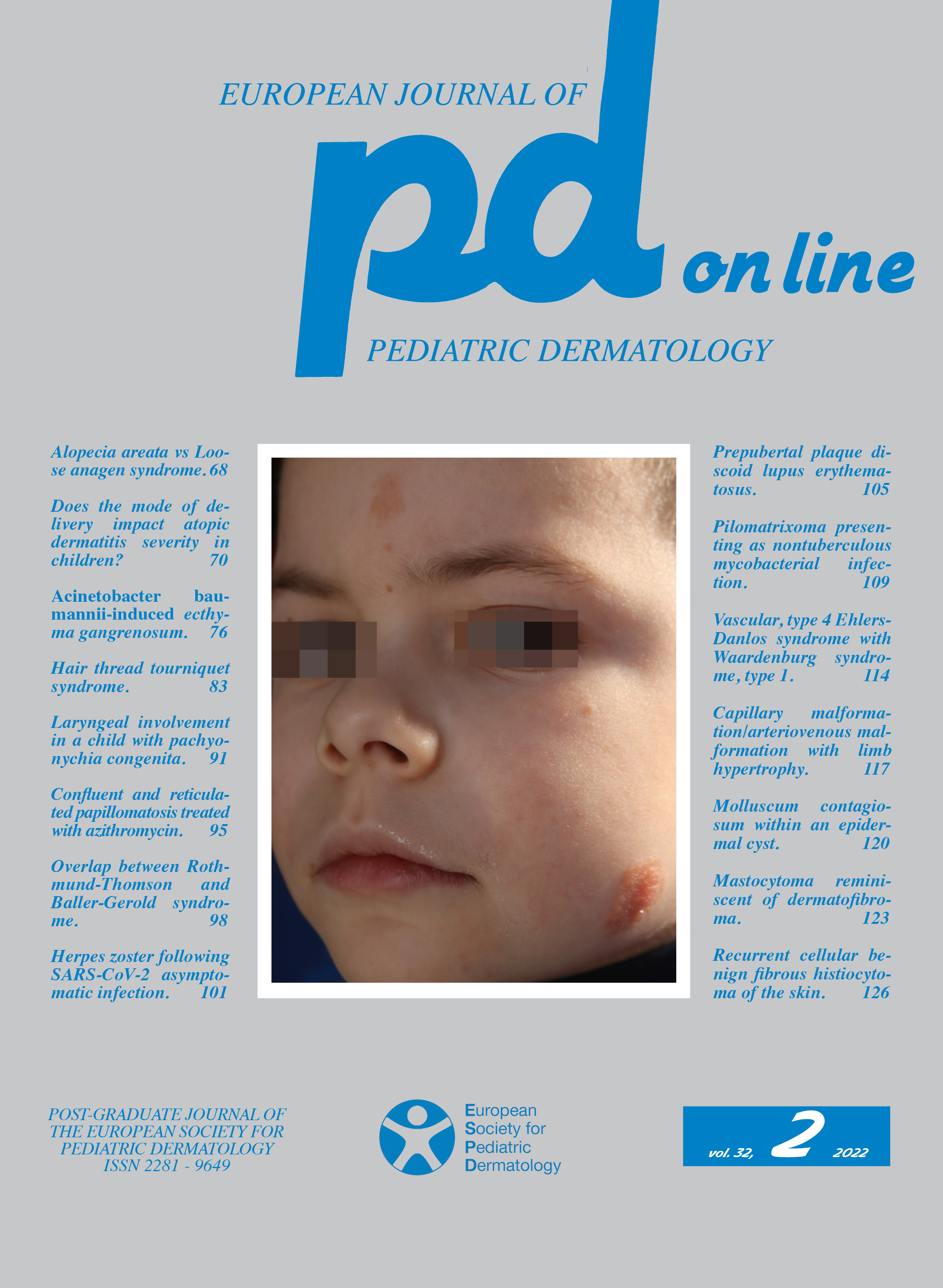Hair thread tourniquet syndrome. Case reports and case series review.
Downloads
DOI:
https://doi.org/10.26326/2281-9649.32.2.2351How to Cite
Abstract
Introduction. Hair thread tourniquet syndrome is a phenomenon that occurs among infants. A human hair strangulates a body appendage and causes focal edema followed by ischemia. It is a relatively uncommon phenomenon and the literature consists mainly of case reports and case series.
Materials and methods. Conducting plural searches in the literature published up to 2021. Using keywords that serve as synonyms of this condition: hair thread tourniquet, hair strangulation, external constriction on the toe. Articles regarding non-digits hair tourniquet syndrome were excluded.
Results. Among 146 relevant articles, 49 case reports and case series were extracted. A total of 78 individual cases were examined:
Patients’ gender: 35 males, 33 females, and 10 cases did not mention the gender
Patients’ age: the age range is 12 days to 6 years, the majority were between 3 to 5 months.
In 66 cases toes were involved, and in 9 cases fingers were involved.
Discussion. According to the data, there is a higher incidence rate of the phenomenon around 3 to 5 months. This might be explained by the maternal tendency to lose hair (post-partum telogen effluvium or post-partum alopecia). This reaches its peak around 4 months post-partum. No gender is at higher risk. Toes are significantly more involved than fingers and the most frequent toe involved was the third.
There is a lack of demographic data regarding this syndrome, further multi-central cohort studies are recommended.
Conclusions. Infants between 2-6 months are at greater risk. There is no up-to-date demographic data regarding this condition.

